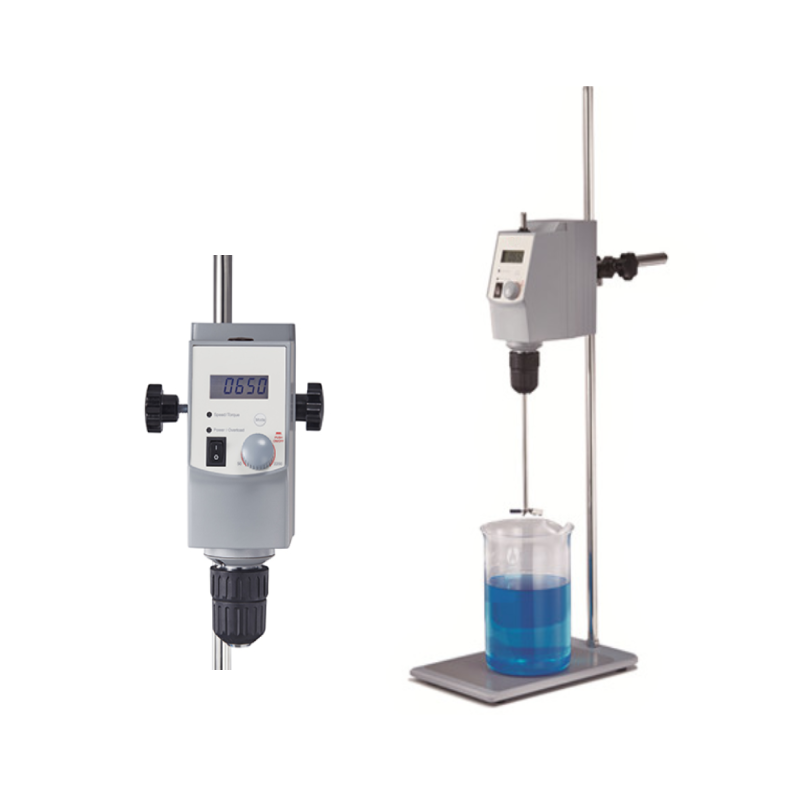Magnetic Stirrer Mixer vs. Overhead Stirrer Mixer: A Comprehensive Comparison
July 10,2023
In the world of laboratory equipment, stirrers play a crucial role in mixing and blending substances. Two popular options for stirring solutions are magnetic stirrer mixers and overhead stirrer mixers. While both serve the same purpose, they differ in terms of functionality, design, and applications. In the following, we will delve into the details of these two types of mixers, comparing their features, advantages, and limitations.
I. Magnetic Stirrer Mixer
Definition and Working Principle
A magnetic stirrer mixer is a device that uses a rotating magnetic field to create a stirring action. It consists of a magnetic stir bar, usually made of Teflon or glass-coated magnetic material, which is placed inside the container holding the solution. The magnetic stir bar is then rotated by a magnetic field generated by a rotating magnet located beneath the container.
Features and Advantages
Simplicity: Magnetic stirrer mixers are easy to use and require minimal setup. They typically have a single control knob to adjust the stirring speed.
Cost-effective: Compared to overhead stirrer mixers, magnetic stirrers are generally more affordable, making them a popular choice for laboratories with budget constraints.
Compact and portable: Magnetic stirrers are usually compact in size and can be easily moved around the lab if needed.
Low maintenance: Since there are no moving parts in the solution, magnetic stirrers require minimal maintenance and are less prone to wear and tear.
Limitations
Limited viscosity range: Magnetic stirrers are not suitable for highly viscous solutions as the magnetic field may not be strong enough to rotate the stir bar effectively.
Limited torque: Magnetic stirrers may struggle to stir solutions with high resistance or when additional force is required.
Heat generation: The rotating magnetic field can generate heat, which may be a concern when working with temperature-sensitive samples.

II. Overhead Stirrer Mixer
Definition and Working Principle
An overhead stirrer mixer, also known as a mechanical stirrer, employs a motor-driven shaft with an impeller or paddle attached to it. The shaft is positioned above the container, and the impeller rotates to create the stirring action. The speed and torque of the stirring can be adjusted using the control panel.
Features and Advantages
Wide viscosity range: Overhead stirrer mixers are capable of handling a wide range of viscosities, making them suitable for various applications, including high-viscosity solutions.
High torque: The motor-driven shaft provides a higher torque, allowing overhead stirrers to mix solutions with greater resistance or when additional force is required.
Temperature control: Some overhead stirrer mixers come with built-in heating or cooling capabilities, enabling precise temperature control during mixing.
Programmable features: Advanced overhead stirrers offer programmable settings, allowing users to set specific mixing parameters and automate the process.
Limitations
Complex setup: Overhead stirrer mixers require more setup and adjustment compared to magnetic stirrers. They typically involve clamping the motor and shaft to a stand and positioning the impeller correctly.
Higher cost: Overhead stirrer mixers are generally more expensive than magnetic stirrers due to their advanced features and capabilities.
Space requirements: The setup of an overhead stirrer mixer may require more space in the laboratory, especially when using larger containers or multiple setups simultaneously.
Which Kind of Stirrer Mixer to Choose?
Both magnetic stirrer mixers and overhead stirrer mixers have their own set of advantages and limitations. Magnetic stirrers are simple, cost-effective, and suitable for low-viscosity solutions, while overhead stirrers offer greater torque, wider viscosity range, and programmable features. The choice between the two depends on the specific requirements of the experiment or application. By understanding the differences between these mixers, researchers can make an informed decision and select the most suitable option for their laboratory needs.